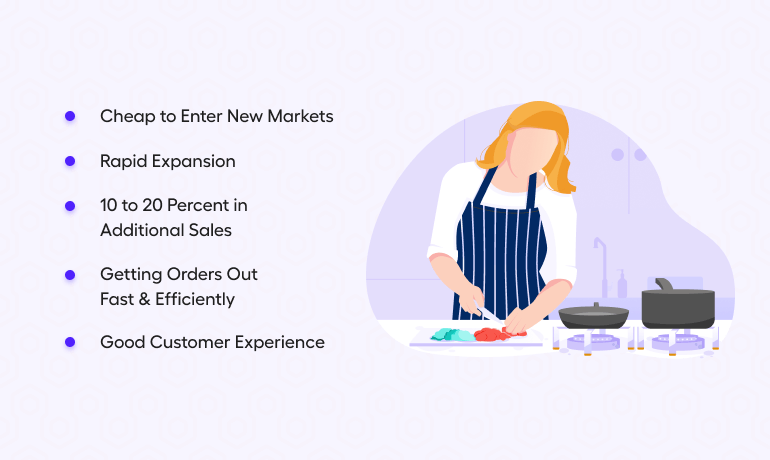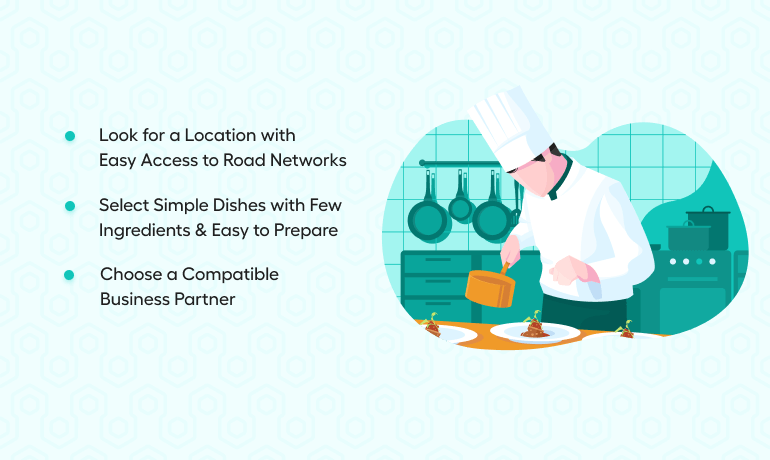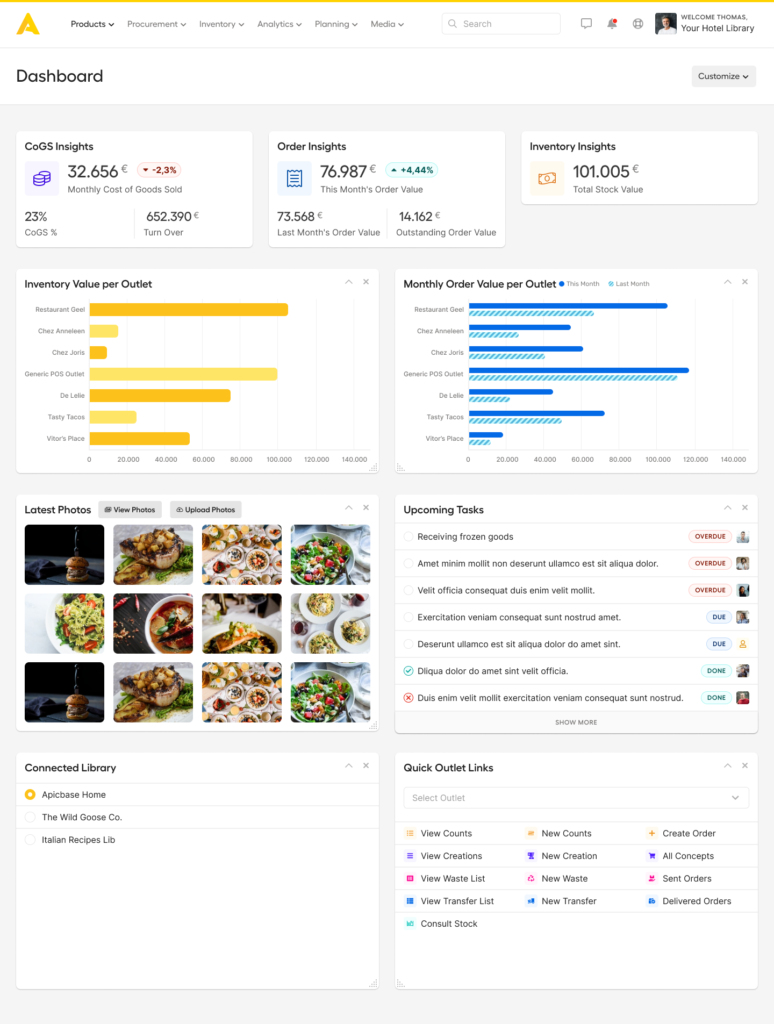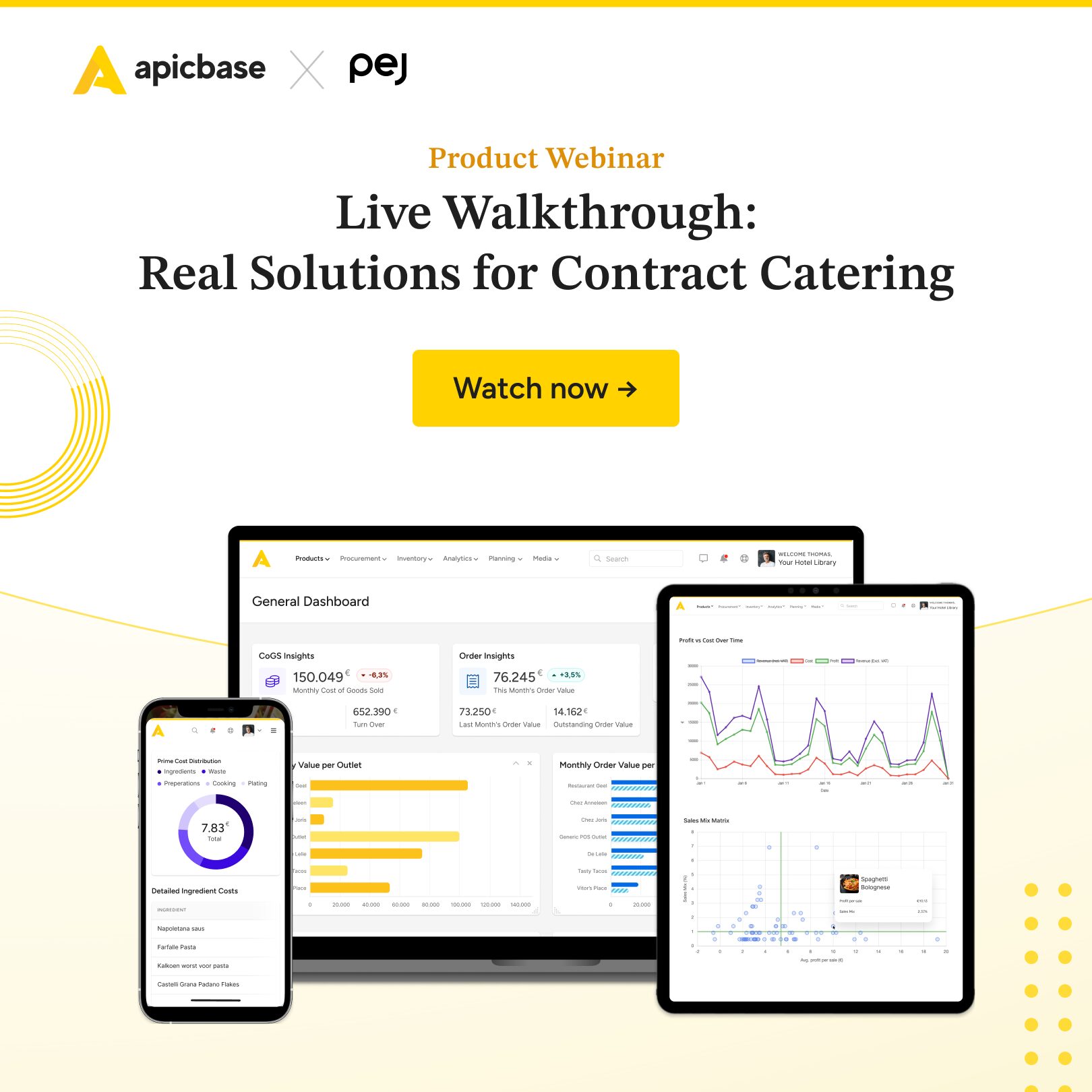Instead of trying to conquer the food delivery space on their own, foodservice operators can also gain market share through established virtual restaurant brands.
Over the past few years, the hospitality industry has been evolving at breakneck speed to meet consumers’ ever-increasing expectations of speed, choice, and convenience.
The demand for convenience, of course, isn’t new. Customers are always seeking faster and more convenient ways of getting what they want (a tasty meal being in the top 3).
People want to eat what they want when they want and where they want it.
The efficiency of online ordering and the exponential growth of delivery platforms, such as DoorDash, Ubereats, Deliveroo, and many more, have driven customer spending on off-premises dining to phenomenal heights.
As a result, hotels, restaurants and other kitchens have been looking for ways to tap into the delivery money, while foodservice brands have been devising new ways to bring the guest experience to their customers’ homes.
At the intersection of supply and demand, we have already seen a worldwide surge in ghost kitchens, but there is another business model: the host kitchen.
Launching a host kitchen makes sense for foodservice operations like restaurants and hotels that are underutilizing their kitchens, and for operators looking to generate more revenue.
In this article, we’ll tell you everything you need to know about host kitchens and how you can get in on the action.
What Is A Host Kitchen?

A host kitchen is a kitchen hosted by a food service company that prepares another brand’s menus for local delivery.
The concept is pretty simple: one restaurant – or hotel, for that matter – leverages its kitchen facilities to prepare another brand’s menu strictly for delivery.
Differently put, a host kitchen is an existing restaurant that uses its own kitchen and staff to cook delivery meals for a completely different restaurant or (virtual) brand.
As a host kitchen, the Big Poppa’s Burger Restaurant could be preparing hot dogs for the Haute Dawg virtual brand out of their kitchen, or bagels for the Bagelicious Restaurant that’s located in the neighboring town. Or both!
But a host kitchen isn’t necessarily a partnership between two restaurants, or between a restaurant and a virtual brand.
A restaurant looking to become a host kitchen could also team up with third parties like Peckwater Brands, NextBite, Kbox Global, Reef, Kitopi, or Franklin Junction.
We work with partners across the hospitality spectrum. You don’t need previous experience of food delivery. Our brands can slot into any kitchen, so don’t worry about equipment, cuisine type, or staff skills – we take care of everything.
Bill Perry
Partnership Manager Peckwater Brands
While some of these platforms merely connect host restaurants with (virtual) brands looking for a host kitchen, others have their own portfolio of virtual brands that can be set up in an existing kitchen. Some of these third parties even function as (g)host kitchens themselves, recruiting brands into their operation. Finally, there are platforms that combine all the models above in a winner-takes-all strategy.
Host Kitchen Model Example
Nextbite, based in Denver, Colorado, uses a host kitchen model where it licenses a portfolio of delivery-only restaurant brands to restaurants with excess kitchen capacity. Restaurant partners can fulfill orders under these virtual brands to augment their restaurant’s dine-in and off-premise revenue. By taking on an additional restaurant brand, a restaurant can take advantage of their slowest hours, or even when they might not be open (such as the early morning or late night). (Source: Nation’s Restaurant News)
What’s The Difference Between A Host Kitchen And A Ghost Kitchen?
Like ghost kitchens, host kitchens can house one or multiple existing restaurant brands and/or virtual brands. What both business models also have in common is that they rely solely on online sales. A (g)host kitchen has no storefront.
That’s where the similarities end.
Ghost kitchens operate out of state-of-the-art kitchen spaces fitted with the latest tech innovations. That calls for major capital investment. The host kitchen concept, however, relies on existing infrastructure. Host kitchens don’t require a brand-new production unit or high rent, and little to no additional labour. That’s why a host kitchen is traditionally a low-investment business for both the host and the brands coming into the host kitchen.
Uber has no taxis. Airbnb has no flats. We use the same model in food delivery to become the number 1 in Europe without a single owned kitchen.
Clément Benoit
Co-founder Not So Dark
How Host Kitchens Benefit All Parties Involved

To understand why the host kitchen model is booming in popularity, let’s look at the benefits of this concept for both the hosts and their “guest brands”.
Benefits For Brands Operating Out of Host Kitchens
As we’ve just mentioned, a host kitchen is a low-cost option for brands wanting to enter new markets. Operators coming into the partnership use their host’s existing infrastructure and staff in exchange for a relatively small fee. They don’t have to invest any capital beyond food inventory.
Recommended Reading: 24 Cost-Reducing Tips That Will Make Your Cloud Kitchen Profitable Within a Year
With capital expenditure reduced, brands operating out of the host kitchen can focus their resources on online marketing and setting up a solid branding strategy. Getting those things right is essential for any virtual brand that operates without a storefront. Equally important is ensuring that every dish coming out of the host kitchen is consistent in quality and presentation. But we’ll talk more about that later on in this article.
Another benefit for restaurants or digital brands enrolling in host kitchen partnerships is the ability to rapidly expand their business. Between the kitchens of restaurants, cafés, hotels, and other eateries in cities across the globe, there’s limitless opportunity for host kitchens. That means you can insert your brand into another restaurant basically overnight.
Benefits For Restaurants Operating As A Host Kitchen
But countless restaurants, hotels, and other hospitality businesses wouldn’t be signing up to become a host kitchen if there wasn’t something in it for them, too.
Adding multiple new brands into an existing kitchen is estimated to bring in 10 to 20 percent in additional sales (and this is a conservative estimate). It’s a great way to make your kitchen more profitable and have it operate at maximum efficiency, as the pandemic exposed how underutilized both restaurant and hotel kitchens are. Many of them operate on limited hours because they are losing money keeping a full kitchen and wait staff on standby. And with some restaurants scaling back to just lunch or dinner, their kitchens are just not used to full capacity.
Additionally, adding a platform like Franklin Junction to your restaurant could create a blended profit margin of over 10 percent for a host kitchen, according to Franklin Junction CEO Rishi Nigam. That’s a big bump in your profits!
Benefits For End Consumers
What about the customer on the other end of the screen? How do they benefit from this type of partnership?
When the host kitchen team is properly trained, it will represent each brand flawlessly. That means preparing the food to perfection, taking care of presentation and packaging, and getting orders out of the door fast and efficiently. In the end, that’s giving the customer exactly what they want: speed, convenience, order accuracy, and ultimately, a good customer experience.
Besides, the more brands are inserted into host kitchens, the more choice there will be for hungry customers around the world.
What Are The Pitfalls Of The Host Kitchen Business Model?

Of course, every business model comes with its own specific drawbacks. When you get it right, the host kitchen strategy is a win for everyone involved, but there are a few things to look out for.
Operators looking into a host kitchen need to thoroughly evaluate their hosts to make sure they are qualified to prepare their dishes and represent their brand well. If that’s not the case, and quality isn’t consistent, it’s the brand’s reputation that’s on the line, not the host’s.
Restaurants, hotels or food production kitchens that want to leverage their kitchen facilities to serve other brands’ food need to make sure they have pressure-tested their team beforehand. Working as a host kitchen shouldn’t interfere with their main operation, as that will end badly for both parties.
Finally, competition in the virtual marketplace has never been more fierce than today. Therefore, it can be challenging for host kitchen brands to stand out. Luckily, we’ve gathered some useful tips to run a successful virtual brand for you to explore.
Recommended Reading: How To Run a Successful Cloud Kitchen? We Asked Ghost Kitchen Operators Worldwide
Pairing Your Brand With A Host Kitchen: 3 Key Steps

Now that we’ve got the basics covered, it’s time for a deep dive into the key steps you should follow if you want to get your brand into a host kitchen.
1. Location, Location, Location
Just like ghost kitchens, host kitchens rely entirely on their online presence to generate orders. That means an expensive prime location in the city centre isn’t necessary to succeed. However, your host kitchen should be easily reachable by your delivery partners (and your suppliers). Look for a location with easy access to road networks.
It’s equally important to thoroughly research the demographics in the area. Which cuisines do consumers in the neighbourhood like? When do they order and which concepts are missing from the market? Find the sweet spot, and you’re ready to go.
Whatever host kitchen you are serving food from, it should be located within roughly 5 miles from your target customers to guarantee fast delivery.
2. Create A Curated Menu
If your host kitchen is in a perfect geographic location but your food isn’t up to standard, your operation will fail.
When you outsource your brand to a host restaurant or hotel kitchen, you need to ensure food quality and consistency. To avoid overwhelming host kitchen staff, it is key to work with a slimmed-down menu. Select simple dishes that require few ingredients and that can be easily executed in any kitchen. You might also want to start with your bestsellers that have already proven their merit.
There’s also another way to ensure your food’s consistency. Some brands continue to prepare their own dishes (or meal components) in a central kitchen. Once ready, the meals are then shipped off to the host kitchen, where they are assembled and packaged for delivery.
This strategy in our opinion has the most potential for success, as it eliminates most of the uncertainties involved in remotely managing your brand through a host kitchen.
Whether you run a central kitchen or not, don’t forget to keep track of orders and inventory across your host kitchen operators so you can always meet customer demand. Implementing the right software will ensure product availability, timely deliveries, and seamless production at all times.
3. Find Your Perfect Match
You’ve decided on a good area to serve your food in, and you’ve built a winning delivery menu. Now it’s time for the most important step: choosing a compatible business partner.
Having the right mindset is essential. The host kitchen must be ready to run a second business alongside its existing operation. Furthermore, location, kitchen capacity and impeccable hygienic practices are also starting conditions.
Rens Bekkers
CEO Vegan Burger Brothers
Essentially, your host kitchen will have to meet multiple criteria for the partnership to succeed:
- Your partner has to be able to take on a significant amount of additional orders without disrupting its main operation.
- Kitchen staff should have experience creating food from scratch so they can execute your menu to perfection.
- Your host’s existing infrastructure needs to work well with the menu you want to serve.
- Your suppliers (or your central kitchen) should be able to easily make deliveries to the host kitchen.
- Overall, your partner should be performing well on its own and have good customer ratings and an impeccable brand reputation.
Get Your Ducks In A Row
Get your ducks in a row before you launch and ensure your partnership is future-proof. Getting on board with the latest technology helps you and your host kitchen to optimize operational flows and collect performance data while saving time and resources. It’s crucial to invest in a platform that integrates well with other new tech solutions as they emerge. That’s how your brand will be able to stay on top of the game and efficiently scale your operation.
Delivery-Only Brands: A Lot To Win
‘Looking at the overall picture, delivery-only brands have very few downsides’, says Tobi Lukaschek of Rocket Restaurants.
Done right, restaurateurs can use delivery-only brands to bolster their business during off-peak hours and increase productivity during peak times.
Tobi Lukaschek
Business Development, Rocket Restaurants
‘Done right, restaurateurs can use delivery-only brands to bolster their business during off-peak hours and increase productivity during peak times’, says Tobi. He speaks from experience. During the pandemic, Rocket Restaurants developed its own virtual restaurants that operated out of the existing brick-and-mortar restaurants. The virtual brands allowed the 50+ kitchens of the brand to remain operational when dining areas were closed.
‘An established delivery-only brand will provide a restauranteur with the know-how, tools, training and technology to turn additional delivery-only sales into greater four-wall operating margins. Restauranteurs need not worry about menu development, operating procedures, dish photography or marketing. The expertise comes from the delivery-only brands directly. Whilst food delivery marketplaces such as Deliveroo, JustEat, Lieferando, UberEats, Wolt, Doordash and the like provide a risk-free means to test the waters before investing in in-house delivery logistics’, Tobi Lukaschek concludes.
Conclusion: Is The Host Kitchen Model Both Viable And Future-Proof?
Host kitchen partnerships are brand new, so the hospitality industry is still in the early stages of understanding its full potential.
However, it’s clear that the business model can help restaurants, caterers, and hotels tap into new revenue at little cost to their business.
In the current climate, host kitchens present a viable option for foodservice businesses looking to grow their brand without the need for capital investment. The model enables (virtual) restaurant brands to reach additional customers in new locations through delivery, without having to build ghost kitchens themselves.
Restaurants that want to host (virtual) brands out of their existing kitchens have to ask themselves whether they are able to manage and prepare a large number of meals for delivery without it interfering with their main business.
Alex Carter of Nextbite claims: ‘if you think about the kitchen as a manufacturing facility for food, I would say the average kitchen is probably operating at 30% output of what it could do at peak.’
This would mean the potential for host kitchens is huge.
Add the huge demand for food delivery and the need for production units near where customers live, and we believe the host kitchen model is likely to remain a restaurant industry staple.

Monitor Host Kitchens In a Dedicated Dashboard
If you are running multiple virtual brands and need to keep tabs on sales, menus, inventory and internal orders of your host kitchens then Apicbase can help.
Our tech solution provides your operation with a seamless management platform to run your entire back of house, no matter how many host kitchens you connect.
Improve operational efficiency and scale faster.


